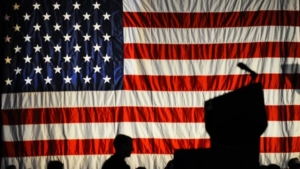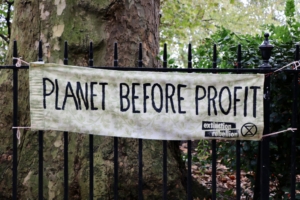Is There a “Trump Phenomenon” the Polls Are Missing?
Here’s What You Need to Know
As the polls in the presidential race continue to tighten, many pollsters and political observers have spent countless hours trying to determine whether, as Donald Trump has claimed, there is a silent majority of American voters who are planning to come out and support the Republican nominee on Election Day that do not typically vote in presidential elections. The assertion that current polling is missing these voters is being referred to as the “Trump phenomenon.”
If these voters do exist, where would they come from? The Wall Street Journal recently outlined one potential answer, examining how Trump has successfully tapped into the needs and frustrations of Americans living “in places with fraying social fabric.” These former industrial hubs have been ground zero for the decline in American manufacturing and the rise in heroin addictions, along with the corresponding decline in overall quality of life, are leaving these Americans feeling abandoned and longing for the ways of the past – which is exactly the message Trump delivers on the campaign trail.
So how are pollsters accounting for the possibility of a “Trump phenomenon”? We asked one of our favorite pollsters and one of our favorite data crunchers what they thought about the potential of the “Trump phenomenon” to cause a surprise on Election Day.
Subscribe to Receive Insights
"*" indicates required fields
Kristen Soltis Anderson, Co-Founder of Echelon Insights, says Trump’s voting base is hiding in plain sight:
“If there’s a ‘hidden Trump vote’ – and that’s a big if – the place one would expect to find them is ‘white college educated men.’ Right now, Clinton is performing better than normal with white college educated voters than Democrats tend to do, and if we take seriously the idea that there are people who like Trump but are afraid to admit it, that’s where I’d guess you’d find them. But let’s be clear – the ‘hidden Trump vote’ is not about sampling problems. Old white voters are easy to survey; younger voters, urban voters, voters in racial and ethnic minority groups are the ones that might be ‘missing’ in a sample these days, and they’re not voting heavily for Trump.”
Mark Stephenson, CEO of Red Oak Strategic, says this unique cycle requires opening the aperture of the lens much wider than usual to capture every possible supporter in the analysis:
“As far as Trump’s ‘silent majority’ goes, they are less silent and less hard to find than one might think. In much of the research and models that we are building, we aim to cast as wide a net as possible for possible turnout scenarios. In fact, in many surveys, voter interest is actually higher than in 2012, indicating that at this point in the cycle, the race is still up in the air. Just this week, our Red Oak Strategic survey found Trump beginning to solidify his vote share among Republicans and actually take a 2-point national lead over Clinton among all likely voters.”
Whether there is some segment of the electorate quietly waiting for Election Day to come out in force for Trump remains to be seen, but it is clear neither side can take anything for granted except that we have yet to see the final twists and turns in this crazy election cycle.
News You Can Use
FILIPINO RENEGADE
President Rodrigo Duterte of the Philippines has prompted concerns within his country’s military after a rash of anti-American, and more recent anti-EU, outbursts placed the country’s relationship with Western powers, including their military alliance with the U.S., in question. In a country prone to coups by a military that strongly favors cooperation with the U.S., Duterte has sought to maintain the support of the military through his campaign promise to double soldiers’ salaries. But, many top military officials have been caught dumbfounded by the President’s demands for American military advisers supporting counterterrorism efforts to leave the country. Given how important the American military presence in the Philippines is to U.S. interests in Asia, grappling with an unfriendly government or the destabilizing impact of a coup could present the first major foreign policy challenge to the next President.
NO MORE AUTO-PILOT SPENDING
In a recent paper, Urban Institute economists C. Eugene Steuerle and Rudolph G. Penner argue that the federal budgeting process must begin requiring non-discretionary spending items, like automatic increases to entitlement funding, to be scrutinized with the same attention as those discretionary programs that fight for funding each year. Steuerle and Penner point out that these expenditures often go unchecked because the budget process focuses on 10-year increments, allowing programs’ true cost to be hidden outside the budget window, and thus a problem for a future Congress. Forcing more regular reviews of these big ticket programs would allow the budget increased flexibility to allocate resources and better reflect the changing nature of national priorities.
THE ORIGINAL SIN
In a recent Wall Street Journal op-ed, Peggy Noonan reminded us that the American people’s distrust of Hillary Clinton goes all the way back to the 1993 firing of seven nonpartisan, career staffers in the White House Travel Office. At first, the White House claimed the staffers were the targets of a criminal investigation by the FBI. But when the media began to scrutinize the terminations, the administration changed its story to suggest the firings were part of a pledge to cut White House staff. Throughout the process, Mrs. Clinton denied any knowledge or involvement in the firings. Several years later, it became clear the staffers had been removed by Mrs. Clinton in order to make room for political operatives who would ensure the travel office business went to an Arkansas company with long personal and financial ties to the Clintons. The pattern of this scandal – “lie, deny, revise, claim not to remember specifics, stall for time,” and ultimately dismiss it as “old news,” became the Clinton’s model for all future scandals.
A TEA PARTY DEMOCRAT?
In April, Republican Rep. Bill Shuster of Pennsylvania narrowly defeated his erstwhile Tea Party challenger Art Halvorson in a primary. But Halvorson hedged his bets, encouraging more than 1,000 Democrats to vote for him as a write-in candidate in their primary, which was enough for him to become the Democratic nominee. The move creates challenges on both sides. For those on the right, it challenges party loyalty versus ideological agreement, and for those on the left it creates a conundrum of whether to vote for an extreme candidate who will be easier to beat in 2018 or support the more centrist candidate who helps the Republicans keep the House. Either way, if Halvorson is successful, look for political parties to scrutinize ballot access rules that allowed this situation to occur.
STATE BUDGET CUTS =/= TUITION INCREASES
Recent conventional wisdom has suggested college tuition increases are the result of state budget cuts to higher education funding. But a recent analysis from the Manhattan Institute’s Preston Cooper has poked holes in this assumption. Budget cuts fail to explain the rise in tuition at private universities, and there’s very little correlation between states where budgets have been cut most and states where school tuition has increased most. The actual culprit behind the tuition increases, Cooper argues, may be the growing availability of indirect subsidies through federal student aid programs that artificially drive up the cost of a college education, leading students to pay more and go deeper into debt.
Mark Your Calendars
Monday, September 26: First Presidential Debate, Hofstra University, Hempstead, NY



